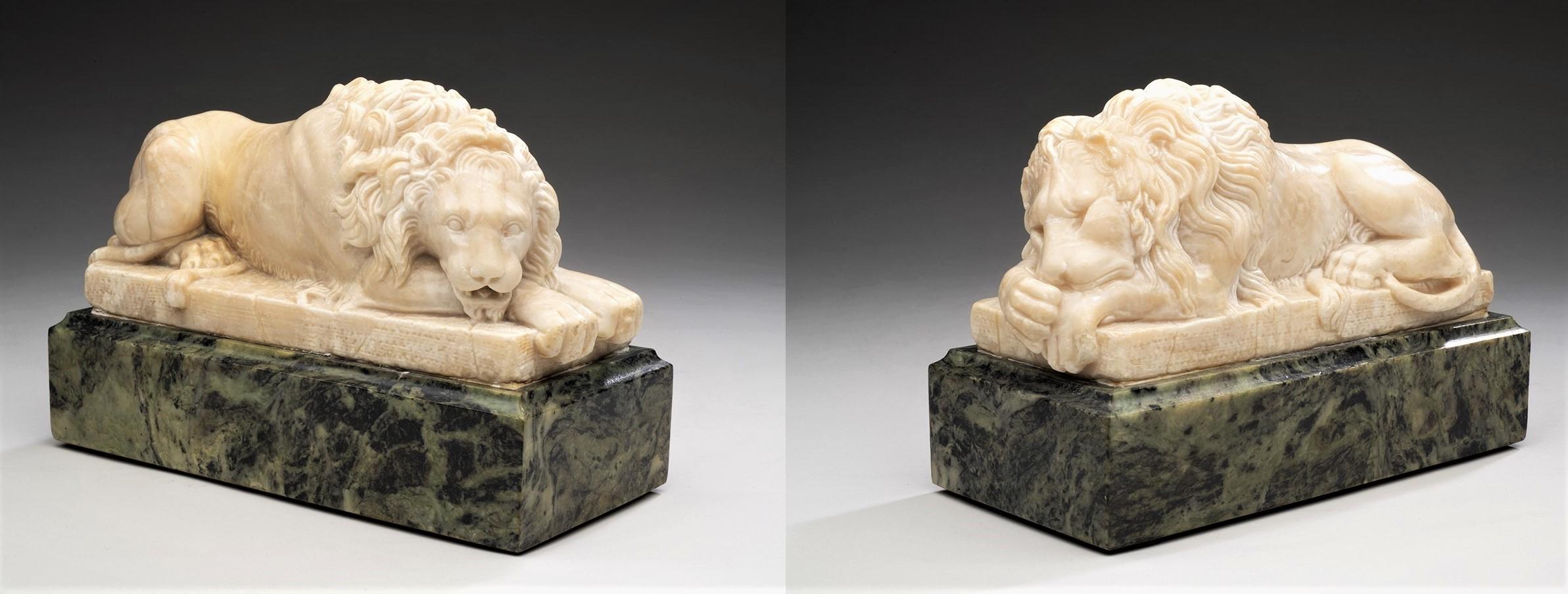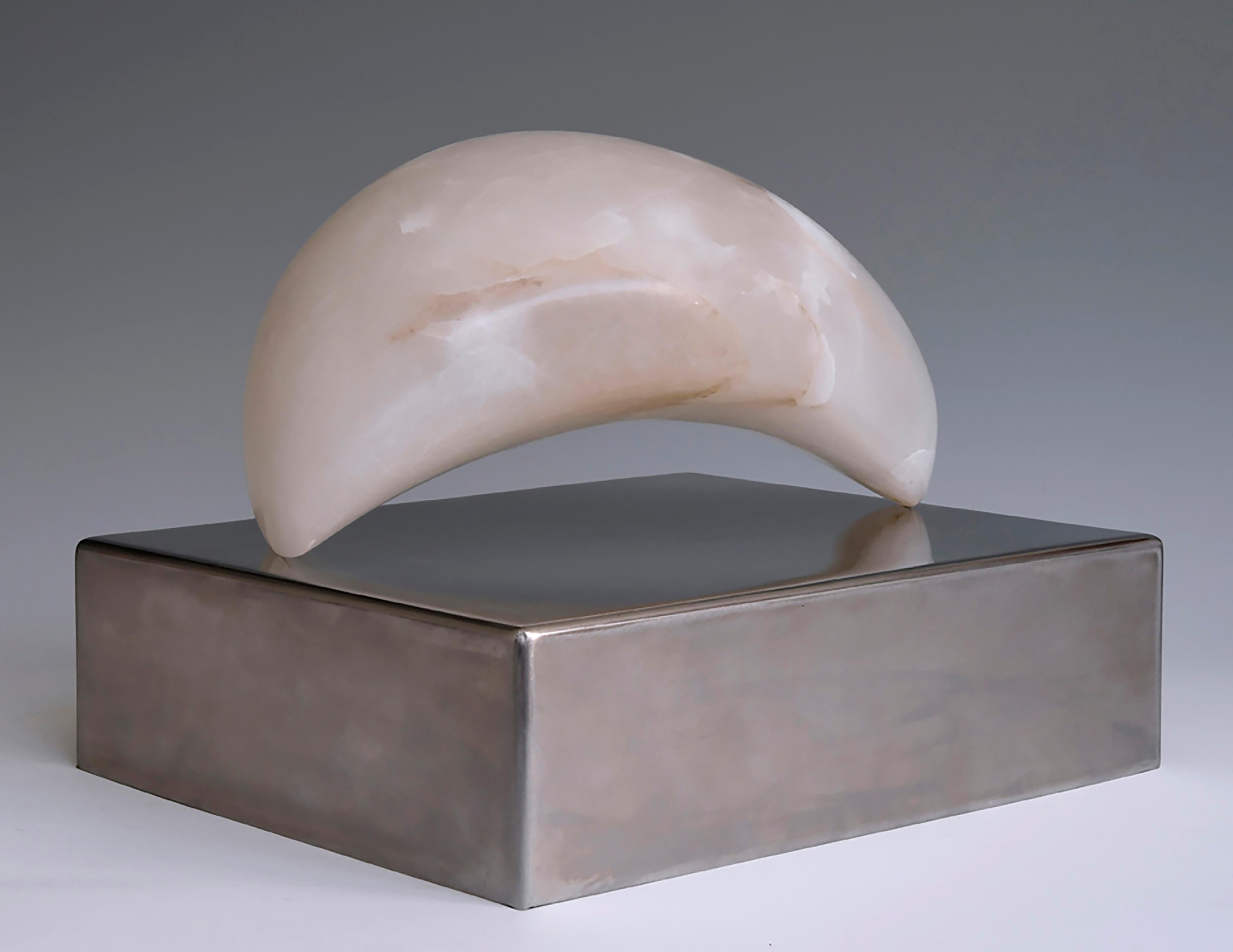Items Similar to The Three Magi
Want more images or videos?
Request additional images or videos from the seller
1 of 5
Peruvian, Ayacucho SchoolThe Three Magica. 1800
ca. 1800
About the Item
Provenance: Private Collection, Spain.
Known as Peruvian alabaster for its translucency and workability, Piedra de Huamanga is a highly prized material from the province of Ayacucho in Peru. In the 17th and 18th centuries, local craftsman in the town of Huamanga began to specialize in the production of small-scale, polychrome religious sculptures made from this distinctive stone. Huamanga sculptures are among the most accomplished examples of carving from the Spanish Americas, where polychrome wood sculpture was a far more common sculptural medium. These works, which were created as independent sculptures or as sculptural groups—such as our three Magi—were intended for ecclesiastical as well as domestics settings.
Our three figures likely formed part of a larger Nativity group—a New World variant of the tradition of the Neapolitan Crèche. Melchior, Balthasar, and Caspar each carry their gifts of gold, frankincense, and myrrh, as specified in the Gospel of Matthew. But the lands from which they traveled and the animals which brought them to Bethlehem are not identified in the Bible. Here the anonymous artist of our figurines has followed a popular tradition that became current in the Renaissance, in which the eldest of the three kings, Melchior, was thought to be from East Asia; the middle magus, Caspar, from Arabia; and the youngest, Balthasar, from Africa. They travel on appropriate modes of transportation: a horse for Melchior, a camel for Caspar, and an elephant for Balthasar, slow as it might make the journey. The natural warm white color of the stone is retained for the three animals and for the skin of the Magi, save for Balthasar whose face, arms, and hands have been delicately painted. With the exuberantly colored robes and hats worn by the Magi, these figures are charming celebrations of the Feast of the Epiphany.
- Creator:Peruvian, Ayacucho School (Peruvian)
- Creation Year:ca. 1800
- Dimensions:Height: 7.5 in (19.05 cm)Width: 6.5 in (16.51 cm)
- Medium:
- Period:
- Condition:
- Gallery Location:New York, NY
- Reference Number:1stDibs: LU10212238202

About the Seller
5.0
Recognized Seller
These prestigious sellers are industry leaders and represent the highest echelon for item quality and design.
Established in 1997
1stDibs seller since 2012
17 sales on 1stDibs
Typical response time: 11 hours
- ShippingRetrieving quote...Ships From: New York, NY
- Return PolicyThis item cannot be returned.
More From This SellerView All
- The Story of Joseph from the Second Baptistery Doors, Florence (“The Gates of PaBy Ferdinand BarbedienneLocated in New York, NYFerdinand Barbedienne (Saint-Martin-de-Fresnay 1810 – 1892 Paris) after Lorenzo Ghiberti (Florence, 1378 – 1455) Signed at the lower right of the principal relief: F. BARBEDIENNE Provenance: Private Collection, USA. Barbedienne’s “Gates of Paradise” reliefs are one of the triumphs of nineteenth-century bronze casting and patination. The nine panels that comprise our example are half-size reductions of the famous originals by Lorenzo Ghiberti, made for the Baptistery of Florence and now housed in the Museo del Opera del Duomo. Mounted in an impressive, mullioned frame surround, our work is an exceptional exemplar of the Renaissance Revival, the broadly influential style and movement that infused architecture, design, and artistic culture in the latter half of the nineteenth century. The central scene, The Story of Joseph, is perhaps the most celebrated of the entire series depicting as it does seven episodes from the Biblical narrative integrated into a single composition: Joseph cast by his brethren into the well, Joseph sold to the merchants, the merchants delivering Joseph to the pharaoh, Joseph interpreting the pharaoh’s dream, the pharaoh paying him honor, Jacob sending his sons to Egypt, and Joseph recognizes his brothers and returns home. The surrounding reliefs—two vertical figures in niches, two recumbent figures, and four portrait heads in roundels—are as well faithful reductions of Ghiberti’s original bronzes on other parts of the doors. The maker of these casts was the renowned 19th-century French fondeur Ferdinand Barbedienne. Gary Radke has recently written of this great enterprise: “The Parisian bronze caster Ferdinand Barbedienne began making half-sized copies of ancient and Renaissance sculpture in the 1830s. His firm benefitted enormously from the collaboration of Achille Collas, whom Meredith Shedd has shown was one of numerous pioneers in the mechanical reproduction of sculpture. Their competitors largely devoted themselves to reproducing relief sculpture, but Collas devised a process for creating fully three-dimensional copies. A tracing needle, powered by a treadle, moved over the surface of a full-sized plaster cast or bronze of the original and triggered a complementary action in a cutting stylus set over a soft plaster blank…He signed an exclusive contract with Barbedienne on November 29, 1838, and won medals for his inventions in 1839 and 1844. Barbedienne’s half-sized copies of the Gates of Paradise were famous not only for their fidelity to the original, but also for the way their gilding…suggested the glimmering surface that was hidden under centuries of dirt. Some critics even saw Collas’s and Barbedienne’s work as ‘philanthropic, an exemplary adaptation of industry to the requirements of art, the artist, the workers, and the public alike.’ At 25,000 francs, Collas’s and Barbedienne’s reduction of the Gates of Paradise was singularly more expensive than any other item for sale in their shop. All the reliefs, individual statuettes, and busts were cast separately and could be purchased either by the piece or as an ensemble. Fittingly, Barbedienne’s accomplishment earned him the Grand Prix at the 1878 Paris Exposition Universelle, along with numerous other medals.” Three complete examples of the Barbedienne-Ghiberti doors are known. One, first installed in a chapel in the Villa Demidoff of San Donato near Pratolino, was later acquired by William Vanderbilt...Category
Late 19th Century Figurative Sculptures
MaterialsBronze
- Portrait of Ni-PologLocated in New York, NYSigned, dated, and inscribed on the verso: Malvina Hoffman/ Den Pasar/ “Nipolog”-/ © 1932/ Bali Provenance: The artist; her estate. Literature: Mal...Category
1930s Realist Sculptures
MaterialsTerracotta
- Head of a Young African ManLocated in New York, NYProvenance: Private Collection, Spain. This intriguing and enigmatic sculpture depicts the head of a young African man emerging from a circular opening ...Category
Early 1800s Figurative Sculptures
MaterialsTerracotta
- PersistenceLocated in New York, NYProvenance: Sables de Fontainbleau, Seine-et-Marne, France “Gogottes” are natural creations formed out of sands deposited in Northern France during the Oligocene Period, approximately 30 million years ago. Much later, in a process that has only recently become understood, groundwater rich in silica flowed through the sands...Category
15th Century and Earlier Naturalistic Abstract Sculptures
MaterialsSandstone
- First JourneyLocated in New York, NYProvenance: Sables de Fontainbleau, Seine-et-Marne, France “Gogottes” are natural creations formed out of sands deposited in Northern France during the Oligocene Period, approximately 30 million years ago. Much later, in a process that has only recently become understood, groundwater rich in silica flowed through the sands...Category
15th Century and Earlier Naturalistic Abstract Sculptures
MaterialsSandstone
- MisunderstandingLocated in New York, NYProvenance: Sables de Fontainbleau, Seine-et-Marne, France “Gogottes” are natural creations formed out of sands deposited in Northern France during the Oligocene Period, approximately 30 million years ago. Much later, in a process that has only recently become understood, groundwater rich in silica flowed through the sands...Category
15th Century and Earlier Naturalistic Abstract Sculptures
MaterialsSandstone
You May Also Like
- Pair of Italian "Alabaster Stone Lions" after Antonio Canova; Mid 19th CenturyLocated in SANTA FE, NM"Pair Recumbent Stone Lions" after Antonio Canova (1757-1822) Italian (possibly Florence) Mid 19th Century Alabaster, marble 6 x 9 x 4 inches This is an exquisite pair of Italian alabaster lions on marble bases based on the monumental lions carved by Antonio Canova (1757-1822), the greatest Italian neoclassical sculptor. Canova sculpted the marble lions for the monumental tomb of Pope Clement XIII in St. Peter’s, Rome in 1792 Canova Lions refers to the pair of copies of lion sculptures by Antonio Canova. When Canova created the sculptures in 1792, he installed them on the tomb of Pope Clement XIII. The marble sculptures are some of the most prominent features in St. Peter's Basilica in Rome. Given the intricacies of creating the original Canova lions, some artists created molds and replicated them. A good example is the pair of lion sculptures...Category
1850s Italian School Figurative Sculptures
MaterialsAlabaster, Marble
- Early 20th C Alabaster Sculpture of a Seated Female Bather.Located in San Antonio, TXEarly 20th C Italian Art Nouveau Alabaster Sculpture of a young female bather. Bather is seated on a stone with arms crossed in a mode...Category
Early 20th Century Art Nouveau Nude Sculptures
MaterialsAlabaster
- Alabaster Cleopatra Sculpture, Unsigned, Attributed to Battiglia circa 1900Located in San Antonio, TXWhite Alabaster Sculpture of Cleopatra, semi-nude in repose. Great detail in clothing and headdress. Face is sharply carved. Sculpture is strongly attributed to Eugenio Battiglia based on the style and theme. Battiglia recreated this particular Cleopatra sculpture...Category
Early 1900s Other Art Style Figurative Sculptures
MaterialsAlabaster
- 1900's Alabaster Sculpture of DanteLocated in Newport Beach, CAA sensitively carved, solid alabaster, antique sculpture of famed Italian poet and philospher, Dante Aligheri (1265-1321). The figure in a rich, flowing robe, holding a book and wear...Category
1910s Figurative Sculptures
MaterialsAlabaster, Marble
- Graceful, Alabaster, Architecture ModelLocated in Newport Beach, CABeautifully carved, Grand Tour period architectural model featuring fluted columns surmounted by Corinthian capitals and a relief carved pediment above a raised base inset with a fl...Category
Early 1900s Figurative Sculptures
MaterialsAlabaster, Marble
- OriginsBy Lilian R. EngelLocated in New York, NYAlabaster on steel 12 x 12 x 14 inchesCategory
21st Century and Contemporary Contemporary Abstract Sculptures
MaterialsAlabaster, Steel
Recently Viewed
View AllMore Ways To Browse
Antique Wood Figurines
The Nativity
Arabian Horse
Antique Wood Hat Form
Antique Nativities
Antique Nativity
Arabian Horse Art
Stone Elephant Sculpture Stone
Antique Horse Figurines
Balloon Animal
Surf Sculpture
Nickel Dog
Kaws Companion 2016
Junk Art Sculpture
Bronze Figurative Fragment Sculpture
Used Kimball
Arizona Wall Sculpture
African Woman Bronze Sculpture




